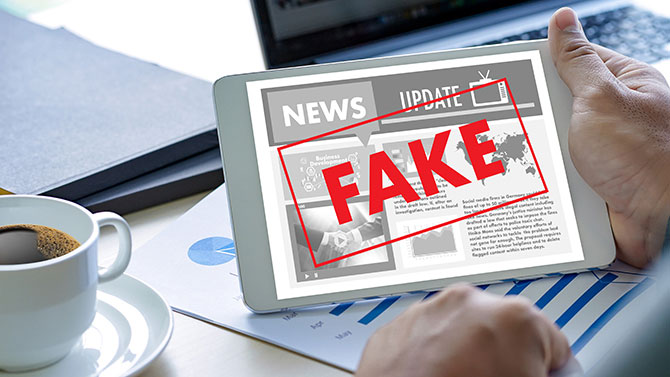Introduction:
There are serious challenges to the integrity of information and public discourse as a result of the widespread problem of false news. The protection that fake news enjoys under the First Amendment of the US Constitution is one of the most perplexing features of it, despite its negative impact on society. The issues surrounding the limits of free expression and the roles of the media in the contemporary day have been provoked by this constitutional protection, which aims to protect freedom of speech and the press. This essay explores the nuanced issues surrounding the First Amendment’s protection of false information.
First Amendment Rights and Freedom of Speech:
Fundamentally, the First Amendment acts as a pillar of democracy, safeguarding people’s freedoms of speech and information access against governmental intrusion. This essential idea guarantees the vitality of a pluralistic society where a range of opinions can coexist and not only encourages spirited discussion and opposition. Although the First Amendment offers many safeguards, some of them also apply to speech that might be damaging, deceptive, or incorrect.
Legal Precedent:
Despite instances of deceptive or fraudulent communication, the U.S. Supreme Court has continuously upheld the extensive safeguards provided by the First Amendment. The Court set a strict threshold for defamation cases brought by public officials in the seminal case of New York Times Co. v. Sullivan (1964), requiring proof of “actual malice,” meaning that the false statement was made with reckless disregard for the truth or with knowledge of its untruth.
With regard to topics of public interest and political speech in particular, the Court recognizes the need of vigorous and unrestrained debate, which is reflected in this criterion. The Court has decided that even while lying can have negative effects, there is a greater chance of restricting free expression than there is of lying.
Marketplace of Ideas and Self-Governance:
Concerns regarding the legitimacy of false news and its protections under the First Amendment of the US Constitution have been raised by its widespread distribution. Fake news is obviously dangerous and can have far-reaching effects, but comprehending why it is shielded by the First Amendment necessitates a more thorough study of legal precedent and constitutional principles.
Difficulties and Obstacles:
Despite having its roots in the First Amendment’s protection of free expression and the press, false news protection nevertheless poses a number of difficult issues. Fake news has the power to skew public opinion, erode democratic standards, and destroy confidence in media outlets. Furthermore, uncontrolled dissemination of misleading information can influence elections and incite violence, among other real-world repercussions.
Problems with Regulation:
Significant challenges face attempts to control or prohibit false news, such as the possibility of government overreach, the danger of stifling free expression, and the challenge of defining and detecting fake news. The distinction between truth and deception can be arbitrary and difficult to draw in a varied and diversified society where people have different opinions and viewpoints. It is also becoming more difficult to effectively monitor and control fake news due to the decentralized nature of internet communication and the expansion of social media platforms.
Combating Fake News:
It may seem illogical at first that the First Amendment protects against false information. Discrimination against speech on the basis of the opinions expressed by speakers is prohibited by law. This implies that speech that is commonly considered to be offensive or false can nonetheless be protected by the constitution.
In addition, there are serious worries about government overreach and the potential chilling impact on free expression when attempts are made to control or restrict fake news. Any attempt to impose restrictions on fake news bears the risk of being arbitrary and subjective, which could stifle opposing viewpoints or dissident opinions.
Furthermore, it is a difficult task to decide who gets to decide what fake news is and what doesn’t. It can be difficult and subjective to distinguish between factual news, opinion, satire, and disinformation. It raises grave concerns about censorship and compromises the values of free speech to entrust the government or any other body with the power to make such decisions.
Encouraging Media Knowledge and Ethical Journalism:
A complex strategy that strikes a compromise between the defense of free speech, the requirement for responsible journalism, and the need for informed citizenship is needed to address the problem of fake news. People can be empowered to distinguish reliable sources from false information by learning about media literacy, critical thinking, and fact-checking. Media companies and digital platforms also bear a need to maintain moral principles and stop the spread of false information by using open-minded content moderation and fact-checking techniques.
Summary:
The First Amendment’s protection of fake news serves as a reminder of the difficulties in striking a balance between the right to free speech and the upholding of democratic principles and the truth. Even though fake news might put our dedication to free expression to the test, any attempts to control or prohibit it must be done carefully to prevent violating constitutional rights. We can lessen the effects of fake news while maintaining the integrity of our democratic institutions in the digital age by encouraging media literacy, critical thinking, and adherence to ethical norms in journalism.
It’s critical to understand that even while fake news might be shielded by the First Amendment, negative effects might nonetheless result from it. It is the duty of news outlets, social media companies, and individual users to critically assess information and dispel false information through responsible journalism, fact-checking, and education.










